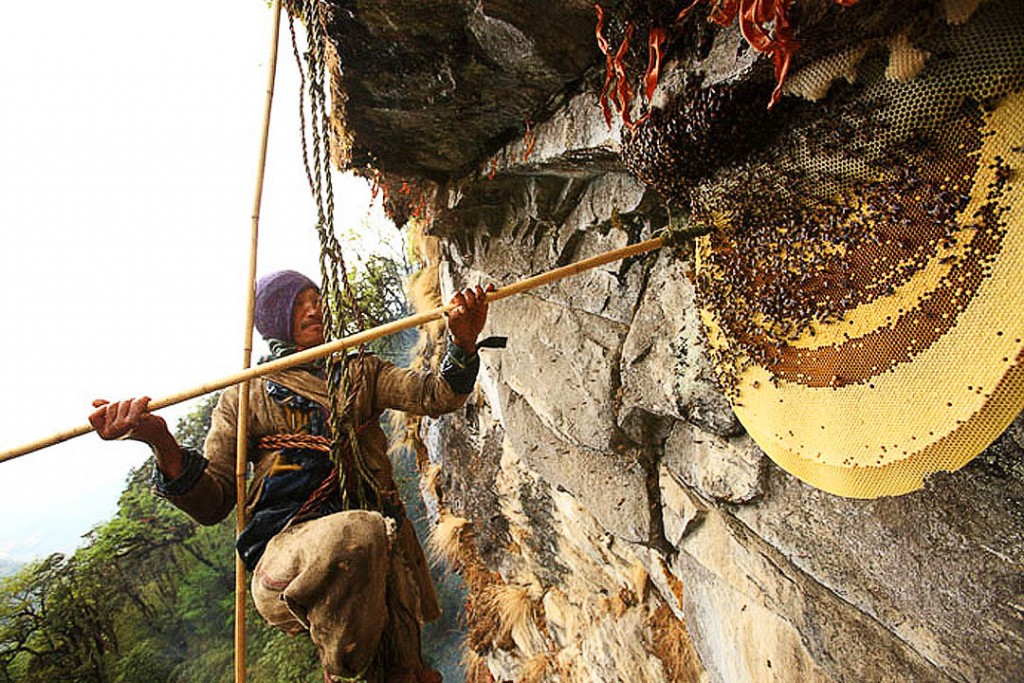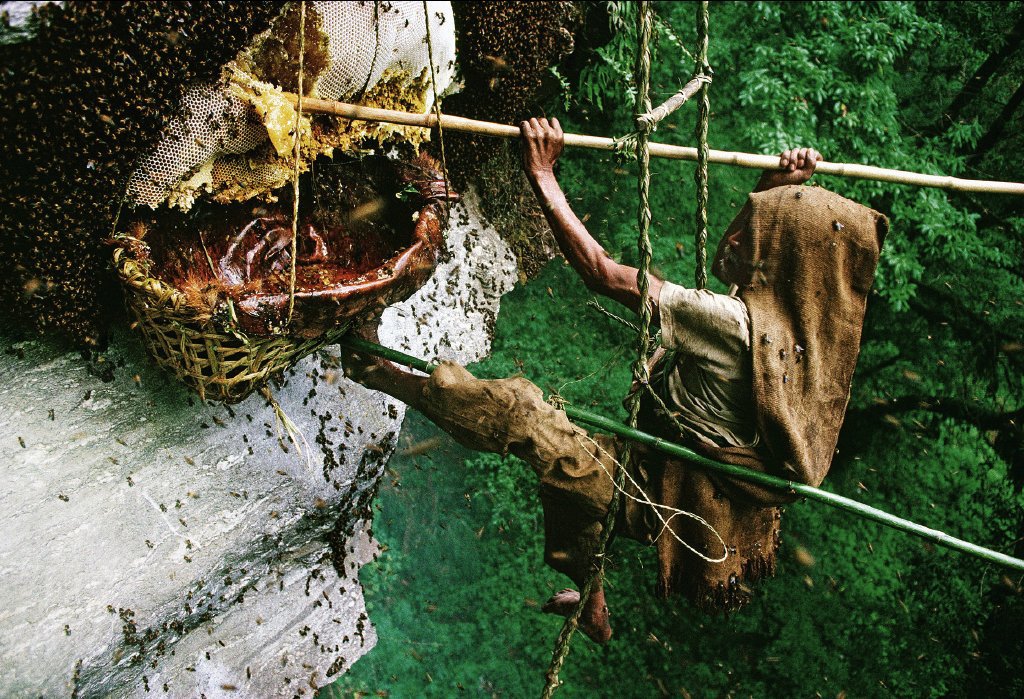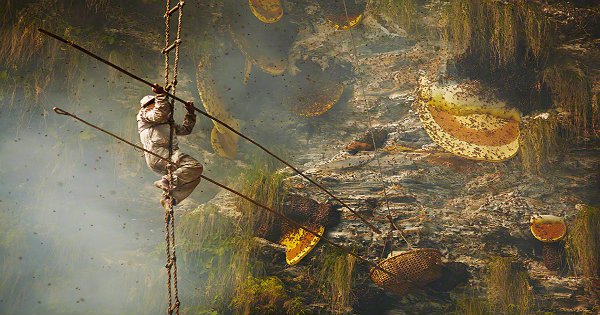When people seek solitude, simplicity and ‘enlightenment’ they often venture to a cave – metaphorically or literally – to shun the influence of the world and go within.
The mountains in Nepal are a popular destination to those who desire to glean wisdom from humble silence. In the same area, however, there is another teacher who, locals say, can be quite powerful…

Deep in the caves of the Himalaya Mountains, a bee that produces what locals call “mad honey” exists, reports Curious Meerkat. Mad, or red honey, is produced by Apis dorsata laboriosa, or the Himalayan Cliff Bee. The bee is the largest in the world and makes an incredibly unusual honey which is said to have hallucinogenic effects.

Brave beekeepers
In central Nepal, where the mountains jut sharply into the sky, there’s a community that continues to celebrate traditional beekeeping methods. They embrace their shared history, despite the infiltration of modern technologies into their daily lives.
The Gurung people skirt the line between tradition and innovation. Younger generations travel to the city for school but return home in the spring to preserve their beekeeping culture.
It’s A Team Effort to Harvest Honey
The bees construct hives in the nearby cliff face and harvesting their honey is no easy feat; it requires strength and bravery. It’s a team effort as the men work together to fashion woven strainers. They also harvest nearby foliage to burn for bee-suppressing smoke. The smoke is necessary as these bees are hefty in size and not afraid to sting.
The Vice video shows the hands of those tending to the harvest, red and swollen from the stings of bees. The stings themselves, according to the villagers, foreshadow potent honey and are seen as auspicious, not an inconvenience.
Because the Apis dorsata make honey out of Rhododendron flowers, a beautiful – but toxic – flower which which is poisonous to humans and contains grayanotoxins, the honey made from the nectar is quite a trip.

In small quantities, it relaxing and is purported to have numerous health benefits. It is described as rather pleasant, if not intoxicating. In larger doses, true mad honey, Rhododendron poisoning (or honey intoxication) can take place. This causes vomiting, muscle weakness and heart irregularities.
Though it is harmful in high doses, locals will go to remarkable lengths to get their hands on the rare honey. The brief documentary above goes into more depth to describe the honey and the intriguing reasons it is sought after.






